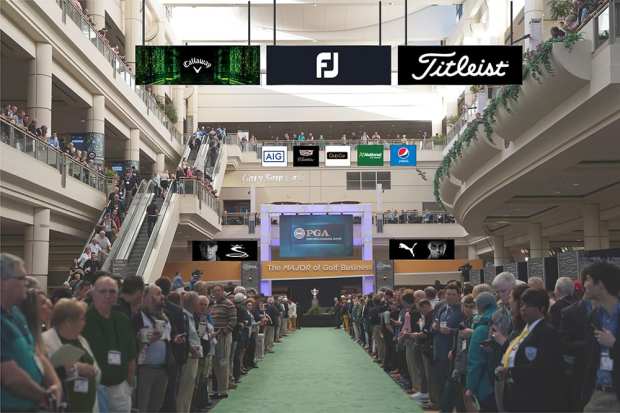The PGA Embraces A Hybrid Approach To B2B Trade

The business of trade shows has endured monumental disruption in the last year as B2B buyers and sellers, no longer allowed to congregate together, were forced to explore new ways of migrating their operations online.
It’s a difficult task to achieve, and there is no single formula for translating trade shows from in-person events to online experiences. Yet for many, including the Professional Golfers’ Association (PGA), the transformation was a necessity.
Late last month, the PGA held its 68th PGA Merchandise Show entirely online. Though it serves a variety of purposes, the show largely operates as a B2B ecosystem connecting golf professionals, shop owners, retailers, manufacturers and other industry players to connect and often, transact.
Migrating the event online had its benefits, according to Marc Simon, PGA Shows vice president.
“The golf industry, and other industries, through the pandemic have been forced to adapt and do things a lot more digitally than they had done before,” he said, noting that with more than 11,000 attendees across 78 countries, the event’s digital nature meant it was accessible to a wider audience, and offered more flexibility for attendees that could browse troves of content like education presentations on their own timelines.
Yet when it comes to the B2B trade portion of the event, migrating operations online faced its share of challenges for both sellers and potential buyers.
Developing A B2B eMarketplace
Usually, the in-person PGA Merchandise Show finds its footing in the value of one-on-one interactions. Simon said enabling that framework for the digital event was a key priority in the planning stage.
“Our focus was on taking the most important factors of when we meet in person: face-to-face content, product showcases, and one-on-one meeting functionality,” he said.
The PGA Merchandise Show developed digital exhibitor showrooms, relying on video functionality to allow brands to display products and virtually connect with potential buyers that had requested individual meetings.
The digitization of the event, in effect, created an online B2B marketplace in which, through a collaboration with B2B eCommerce solution provider RepSpark, the PGA Merchandise Show could allow brands in the apparel, equipment and other golf product categories to not only display virtual catalogues, but actually transact online with buyers.
But in the golf industry, B2B trade often requires more than visuals.
“In the golf-specific space, being able to touch, feel and test the products is important,” noted Simon. “If a buyer wanted to do business with a brand, they could be approved and transact through the platform. But it’s not for everybody.”
A Hybrid Approach Of The Future
In the traditional, in-person trade show models, brands and potential buyers would transact via paperwork, purchase orders and a various mix of online and offline B2B transaction solutions. At first glance, it would appear that the virtual PGA Merchandise Show added value for these buyers and sellers by integrating transaction capabilities, allowing everyone to go digital without the burden of having to research and implement various electronic procurement, order management and payment solutions themselves.
Yet in reality, change is difficult. While larger brands like Adidas, Nike, Callaway and Titleist have been able to navigate the need for digitization amid the pandemic, smaller mom-and-pop companies can struggle to make that transformation, said Simon.
“The stumbling block is partially tied to having a lot of PGA pros working in smaller pro shops and sources,” he explained. “They’re used to sales representatives visiting in person, and being able to write orders on paper directly with the rep. The pandemic has forced more digitization, but not everybody is as quick to adapt.”
Though the virtual PGA Merchandise Show was a success, the Association is planning its return to an in-person even in 2022 driven, in part, by the recognition that in the golf world, nothing beats in-person product demonstrations and personal interactions.
But that doesn’t mean the PGA Merchandise Show’s digitization efforts are over. Rather, the event will embrace a hybrid model next year to continue offering on-demand digital content. Further, its B2B eMarketplace will remain open throughout the year and for the foreseeable future. While some B2B buyers and sellers may return to paper and in-person interactions to transact next year, the industry may find value in being able to view product in-person, and transact online.
There are plenty of lessons to be learned from the experience, said Simon. And while the pandemic has thrust organizations of all sizes and industries into digitization mode, for the golf arena, embracing both digital and in-person B2B trade methods seems to be the way forward in a post-pandemic market.
